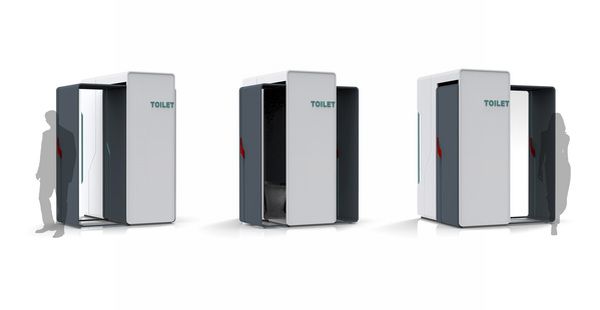Though there are no official stats to prove this, but according to the general observation of the washroom usage habits of the general population, one can deduct that women’s restrooms tend be occupied more often than men’s restrooms are. Since men’s restrooms are fitted with urinals, they don’t need to occupy stalls while women on the other hand don’t have any such handy choices. Most public spaces like restaurants, railways stations, etc. tend to face the issue of higher occupancy in the women’s restroom in comparison to men’s restrooms, and issues like privacy and propriety prevent people from using unisex restrooms. The perfect solution then lies in allowing women the access to unoccupied stalls in the men’s restrooms without asking them to come in direct contact with the men using the restrooms.

The Unisex Toilet Design by designer Aaron Cheng is an award winning concept that explores the possibilities of allowing men and women to use unoccupied restroom stalls that can be accessed from either side. The layout of the unisex toilet features a unisex toilet that can be accessed from either side via a three-piece wall.
On either side of the shared stall units lie corridors exclusive to male and female users. When a user on either side needs to use a stall, they can simply push or pull the wall that leads to the stall like a drawer which closes it off from the other side. This allows both male and female users to use the same restrooms without invading each others’ privacy.
Source: Cheng Folio


